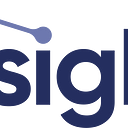Happy Birthday, Anno Labeling App!
The Anno.Ai Labeling App recently entered its third year supporting our customers and internal machine learning workflows. In this post, we highlight some of the latest features that focus on integration with our Vision application.
Anno.Ai’s roots are in making data annotation simple, fast, and accurate. The Anno.Ai Labeling App has successfully served large scale data labeling efforts in the Federal space, shrinking annotation requirements and costs. Anno.Ai’s labeling innovations have automated previously tedious, labor-intensive, and error-prone manual requirements, providing pristine datasets for imagery, video, text, acoustic, and other machine learning (ML) development efforts. In this post, we highlight some of the latest features.
What is Data Annotation?
Data annotation is a foundational step in preparing data for machine learning. Supervised machine learning requires training data, which includes the raw data, such as a set of images, as well as metadata that corresponds to the things you want to detect or classify in the data. Many organizations have a lot of raw data, but it’s often not ready to be used as ML training data. That’s where annotation comes in, as the process of adding that metadata to your data.
Labeling App Key Features
Anno.Ai’s Labeling App is web-based and can be deployed in the cloud or on-prem. The App’s workflows enhance quality through collaboration, allowing labelers to join and assist each other within the labeling canvas, comment on labeling projects, and revisit files to review and correct mistakes. Anno.Ai also provides intra-app training videos as well as an entire platform for customizable benchmarked training data, in order to train incoming or inexperienced labelers.
At Anno.Ai, we know that details count. Our exhaustive metrics dashboard measures and tracks everything from number of files completed, reviewed, and remaining by team; total unique objects and frames by label; the progress of each annotator; and the number of labelers working each dataset. The application also provides detailed QA/QC metrics, both for human as well as ML/pre-labeling platforms. This enables measuring the effectiveness of your team and the pre-labeling models your team is leveraging, and helps target specific areas for improvement, for individual labelers, but also for retraining the pre-labeling models.
New Object Re-Identification Labeling Workflow
Early on, the main focus of the Labeling App was to label imagery and video data according to customer requirements for creating object detection models. Now, as we expand the utility of the application to cover different use cases and appeal to a broader user base, linking the Labeling and Vision applications will increase efficiency by automating several key steps in the labeling/model training workflows. One of our key focus areas is testing and re-training object re-identification (re-ID) models.
Re-ID datasets differ from other types of object detection training datasets in that they require labeling specific individual objects rather than members of a category of objects. In a re-ID dataset, the objects’ category, or class, is pre-established — the important features are an object’s individual characteristics. The labeling app’s new functionality focuses on labeling individual objects.
In re-ID workflows, the labeler may need to track a specific object across multiple images or videos and then ensure that all instances of the object are labeled the same. This may require linking, or merging, objects from different files that have been labeled independently but refer to the same object. Anno.Ai’s new object linking feature makes this task easy.
If a labeler wants to annotate a five-minute video, it may be easier to break it into smaller segments and label each one separately. The challenge arises when the same object appears in all of the segments. After labeling each segment, the labeler can view a separate canvas of objects labeled, sort them, and then link (or merge) them.
Wrap Up
The Labeling App is part of our integrated product suite that provides any organization with an easy, automated means to build and maintain ML-first applications at scale. Does your organization have data labeling and analysis challenges that you need help with? Drop us a line and let us know!
About the Authors
Christian Denckla is the Director of Mission Success at Anno.Ai, and serves as the program lead across several of Anno’s core products. Christian joined Anno with over a decade’s worth of experience serving as a Program Manager, targeting analyst, and subject matter expert for the US Government. He holds degrees from Columbia University and the University of Colorado, Boulder.
Kristi Flis is a Senior Data Scientist at Anno.Ai. Prior to joining Anno, Kristi spent 14 years serving in national security roles in the federal government, including several years overseas. Kristi holds degrees from Georgetown University and Colgate University.
